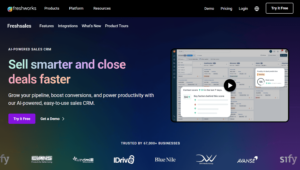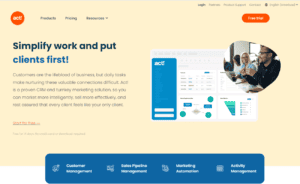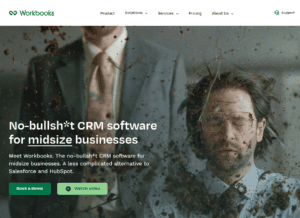
Guide to the 360 Sales Cycle
Guide to the 360 Sales Cycle | A Comprehensive Overview
The 360 sales cycle is a highly effective strategy designed to boost revenue while creating lasting customer value and loyalty. By implementing this approach, your salesforce aims to maximize ROI from your merchandise.
In this cycle, each step must be completed in a timely manner to maintain momentum and achieve success. Below, we outline the key stages of the 360-degree sales cycle:
1. Sales Prospecting: Building the Foundation
Sales prospecting is the crucial first step in closing a sale. A strong lead is essential for a successful sales process. Identifying the right salesperson to close the deal is equally important, as this stage can significantly impact your business outcomes.
Effective sales prospecting focuses on identifying customers who are ready to buy now, not in the future. This can be achieved through various channels, including advertisements, email campaigns, text messages, phone calls, sign-ups, or live demos. Leveraging automated tools to generate leads and sales opportunities can further streamline this process. To enhance your prospecting efforts, consider exploring specialized cold calling training to refine your approach.
2. Making Contact: Engaging Prospects
Contacting leads is a critical component of any sales funnel. It sets the tone for the buyer’s journey. While methods vary across companies, many begin with cold-calling to establish rapport.
An effective approach involves sending personalized emails that detail your product or service. This provides prospects with valuable information about your company and sets the stage for deeper discussions. Additionally, social media platforms like Facebook and Twitter can serve as effective tools for initial outreach.
3. Qualifying Leads: Focusing on the Right Prospects
Lead qualification ensures that your efforts are directed toward prospects who align with your typical buyer profile and whose needs your business can meet.
Quick checks on platforms like LinkedIn or Crunchbase can provide insights into a prospect’s profile. Discovery calls further uncover customer needs, pain points, and preferences. Many companies utilize the BANT (Budget, Authority, Need, and Timing) methodology to assess fit and prioritize leads effectively. If you’re seeking professional guidance, sales consulting services can help streamline this process.
4. Nurturing Leads: Building Relationships
Lead nurturing focuses on engaging prospects who have shown interest but are not yet ready to make a purchase. Maintaining consistent and personalized interactions helps move them closer to a buying decision.
Tailored email campaigns based on customer behavior are a key strategy for nurturing leads. Providing valuable information about your products and services ensures prospects make informed decisions. Personalized touchpoints foster trust and keep your brand top of mind throughout their journey.
5. Presenting an Offer: Sealing the Deal
An offer represents a promise of value to your prospect. It’s essential to craft a compelling pitch that highlights the benefits of your product or service.
Encourage prospects to sign up for a free demo or trial. This allows them to experience firsthand how your solution meets their needs. Collecting and analyzing feedback during this phase helps your team refine their approach and better predict customer expectations. For tailored solutions in this area, explore SaaS sales training to elevate your team’s performance.
6. Handling Objections: Addressing Concerns
Objections are a natural part of the sales process. Addressing them effectively requires active listening and thoughtful responses. Mishandling objections can lead to lost opportunities.
Understand the root of each objection and collaborate with the customer to find a resolution. Aim for solutions that are simple yet impactful, demonstrating your commitment to their success.
7. Closing the Sale: Achieving Success
Closing the sale involves finalizing the transaction and ensuring customer satisfaction. The approach depends on the prospect’s preferences and personality.
A softer approach involves reiterating the benefits of your product or service and how it addresses their goals. A direct approach might include asking the closing question and preparing necessary paperwork. Both methods build confidence and pave the way for a successful conclusion.
Conclusion
The 360-degree sales cycle offers a comprehensive framework for driving sales and fostering lasting customer relationships. By addressing every aspect of the workflow—from product development to closing—businesses can enjoy several key benefits, including:
- Streamlining the sales process by focusing on the most impactful steps.
- Reducing risks and enhancing productivity across sales and marketing efforts.
- Driving revenue growth through improved efficiency and effectiveness.
Adopting this approach enables companies to not only achieve successful sales but also build meaningful and lasting customer connections.
FAQs
What is a good sales cycle time? The sales cycle time refers to the duration from when a prospect first engages with your product to the final purchase. Understanding your company’s sales cycle helps estimate potential revenue and optimize processes.
How can I speed up my sales cycle? Streamlining internal processes, such as automating lead generation through email marketing, phone calls, and online tools, can significantly reduce cycle time while maintaining efficiency.
Which is better: a short or long sales cycle? While short sales cycles can lead to quicker wins, longer cycles often provide opportunities for deeper engagement, resulting in higher conversion rates and stronger customer relationships.






